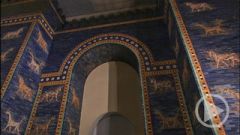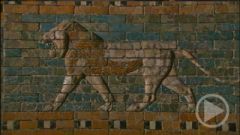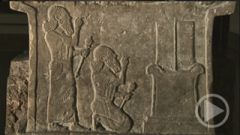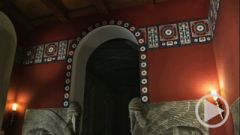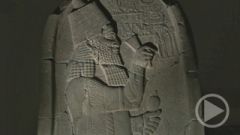- Home
- »
- Germany
- »
- Berlin
- »
- Museum Island
- »
- Pergamon Museum
- »
- The Museum of the Ancient Near East
- »
- The Pergamon Museum - Sumer, Uruk and Mankind’s First Script
Sumer, Uruk and Mankind’s First Script
Sumer, Uruk and Mankind's First Script
A tour of the museum begins in Southern Mesopotamia. As early as 4,000 years before Christ, the Sumerians lived on the banks of the Euphrates. They built a temple to their most important goddess, Inanna, the "ruler of the heavens". The temple, called Eanna, became famous as far as news could travel at the time. More and more people began to settle around the temple, which is how - more than 5,000 years ago - Erech, or Uruk arose, the first known city in the history of mankind.
This painting shows the ruins of Uruk in 1930. Walter Andrae didn't want to put individual artwork or artefacts on display. He wanted to show entire civilisations and the landscapes where they arose. So he captured the ruins in wonderful drawings that his sister, Elisabeth, painted as murals for the museum.
The picture of Uruk shows part of the Eanna temple area. The hill in the background is what remains of a massive ziggurat, the pyramidal temple towers typical of Mesopotamia. The most famous of these would later enter legend as the "Tower of Babel". The ziggurat at Uruk is one of the oldest known.
Even then, in 3,000 B.C., Uruk had a population of at least 40,000 - an inconceivable number at the time. It would have been impossible for so many people to live together without some kind of functioning administrative apparatus. Who paid which taxes? And how much grain was needed to feed the city? All that had to be figured out and recorded.
At first, the Sumerians used calculi, pebbles that stood for specific sums. Slowly that developed into pictographs and, finally, abstract characters - cuneiform, mankind's first writing.
Uncovering the city from under the rubble of millennia, the archaeologists found many thousands of tablets covered in writing. The Museum of the Ancient Near East alone holds more than 23,000 clay tablets.
Joachim Marzahn, curator, Museum of the Ancient Near East:
"This tablet is an administrative report that is more than 4,000 years old. It covers how to debit a certain number of livestock, particularly small animals, from existing stock. So it's a plan of how the animals will be used. With tablets like these, you can see exactly how which products were used to which ends within that administrative department. The reason I think that's so important is that we can then put together a picture of what daily life was like."


